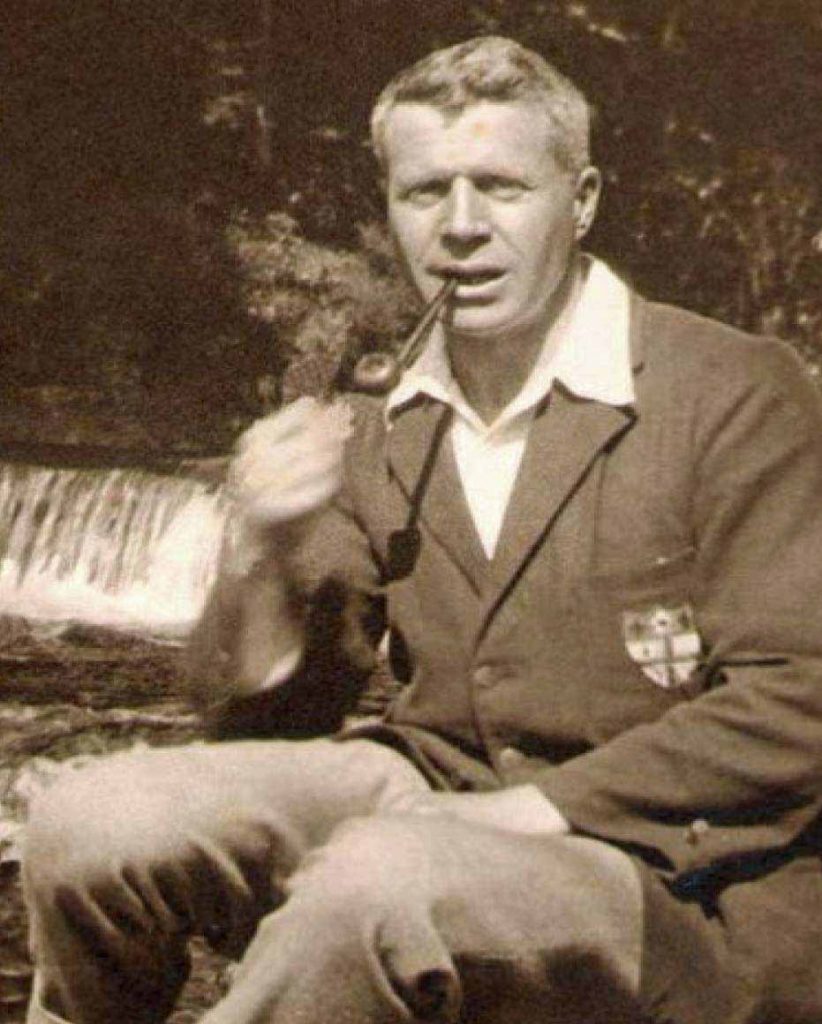Sir Barnes Wallis and Effingham “the best village in England”
Sir Barnes Wallis is remembered as the inventor of the “bouncing bomb” immortalised in the film The Dam Busters and as an innovative, forward thinking inventor and engineer. He is also remembered in Effingham as a former long term resident of the village who contributed a great deal to village life and governance. According to Sir Barnes Effingham was “the best village in England”. Following their wishes, Sir Barnes and his wife were buried in the churchyard of Effingham’s St Lawrence Parish Church.
Effingham Residents Association (EFFRA) has held two recent and very popular exhibitions about Sir Barnes – the first in 2019 to commemorate 40 years after his death and the second in 2022 at the request of Mole Valley’s Heritage Open Days Committee to mark the theme of “Astounding Inventions”. Both exhibitions were held at the Little Bookham Tithe Barn, close to where he lived and is buried in Effingham. They were supported by Sir Barnes’ surviving family, the Brooklands Museum and the Barnes Wallis Foundation. In September 2023 to mark the 80th anniversary of Operation Chastise and because of the popularity of the previous exhibitions there will be a further opportunity on Saturday 9th September to see the displays and watch the documentaries about Sir Barnes by kind special licence from the BBC at the Tithe Barn for Heritage Open Day.
A short book about Sir Barnes was written by historian Vivien White (currently Chairman of EFFRA) in 2019 at the request of Sir Barnes’ surviving daughter Elisabeth Gaunt and was published to coincide with the opening of the first exhibition. EFFRA is very grateful for Elisabeth’s and other family members’ support of the book and exhibitions. The book covered Sir Barnes’ life and career and includes many previously unpublished photographs with the kind permission of family members. A new and improved edition of the book has been published in May 2023 for the 80th anniversary of Operation Chastise (also known as the “Dambusters’ Raid”). Details of how to purchase it can be found here.
The following account of Sir Barnes’ life and career and his time in Effingham is taken from the book.
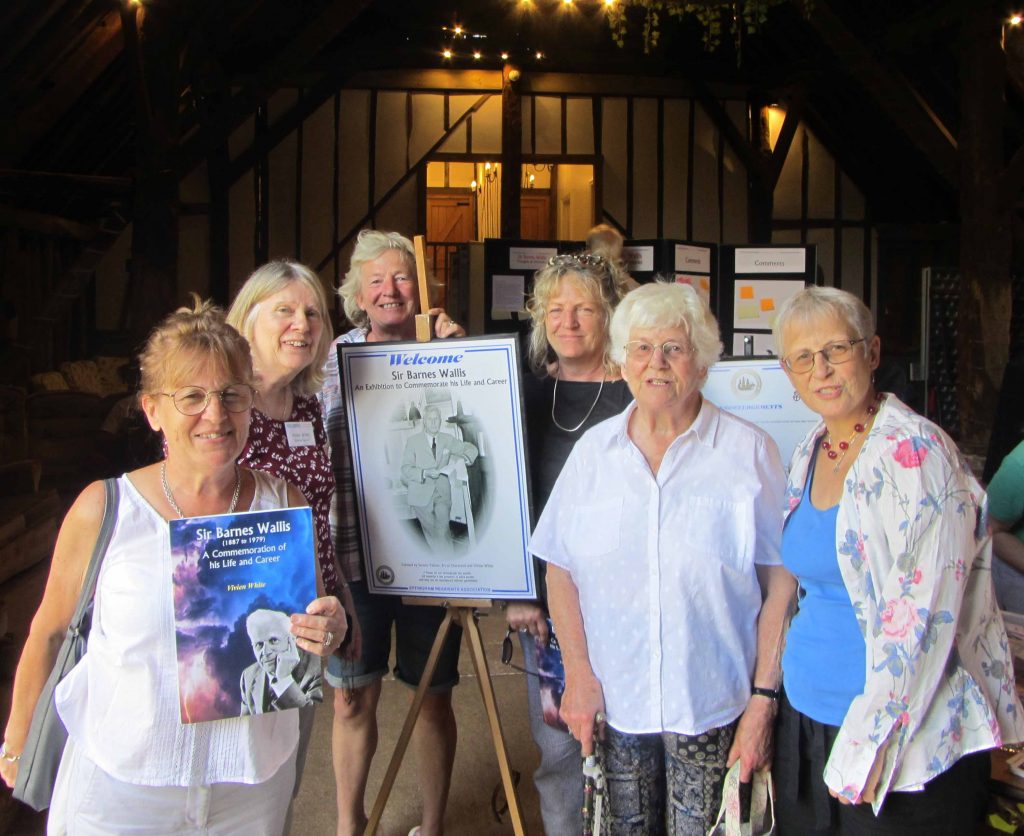
Sir Barnes Wallis 1887 to 1979
Sir Barnes’ Early Life and Career
Barnes Neville Wallis was born on the 26th September 1887 in Ripley, Derbyshire. He was the second of four children of Charles William G. R. Wallis, a surgeon and medical doctor, who early in Barnes’ life moved to a practice in New Cross, south east London. These were the years before the NHS and despite his qualifications Charles Wallis was not financially successful, partly due to his own health issues. Financial problems were a constant theme of Barnes’ childhood.
After being taught by his mother, to whom Barnes was very close, he attended Haberdashers’ Aske’s School at Hatcham and then, at the age of 13, he was awarded a scholarship to Christ’s Hospital. Although he showed considerable promise in science, he did not have a successful school career, and left school in 1904 at the age of 17 without qualifications. His migraines which began in his schooldays would be a life-long problem. Despite all of this, he had enjoyed his time at Christ’s Hospital. He said it taught him to think and he would go on to support the school throughout his life.
Ships, Airships and Marriage
After leaving school he took the unusual path for an ex Christ’s Hospital pupil of taking an engineering apprenticeship at a company in Deptford which manufactured ship engines. But shipbuilding on the Thames was in decline at the start of the twentieth century and so Barnes switched his apprenticeship to J Samuel White & Company at Cowes on the Isle of Wight where he was able to progress to become an engineering draughtsman. Airships were seen as the new exciting technology and when his friend Hartley Blyth Platt offered him a chance to join him at Vickers as Chief Designer in their new airship division (even though he had no experience of airships) he jumped at the chance. Germany was way ahead of Britain in airship technology and the British Government’s interest in catching up with them fluctuated. Barnes volunteered for the British Navy at the start of the First World War but was soon forced to return to work on airships at Barrow-in-Furness which was regarded as more important to the war effort. After the War the Government again lost interest in airships and he took an engineering degree in 18 months and spent a short spell as a teacher at a private school in Switzerland. By 1924 he was back working for Vickers on airship design and production at Howden, Yorkshire. His new job allowed him to marry Mary Frances Bloxam, known as Molly, in 1925 and they had two children, Barnes and Mary, whilst living at Howden. Barnes was working in competition with the Air Ministry which was also building an airship. Barnes’ R.100 airship was successful and made a non-stop flight to Canada. The Air Ministry’s R.101 was poorly designed and crashed in France in 1930 on its first long distance flight, which resulted in the end of the British airships’ industry. The explosion of the German Hindenburg in 1937 ended the airship industry worldwide.
Aircraft and Effingham
By 1930 Barnes had moved to Vickers’ Brooklands site to work on aeroplanes. Previously regarded as suitable only for short flights and for carrying light loads, their potential was now seen as passenger and freight carriers over long flights and for military use. He was appointed as joint Chief Designer despite his lack of experience in aircraft. His time on airships had given him valuable skills and knowledge about the use of metal alloys; the light but strong frames he had designed for the netting on the R.100 to hold the gas bags would now provide the basis for the geodetic structures he designed for aircraft.


Barnes and Molly moved to a new home backing onto the Golf Course in Effingham, Surrey in 1930, from which it was a short commute to Brooklands. Their son’s health and their love of walking were major reasons for choosing to live on the chalk downlands of the Surrey Hills. Their children, Elisabeth and Christopher were born whilst they lived in Effingham. They stayed in the same house for nearly fifty years, leading a very happy family life. They both came to love Effingham and became very involved in village life. 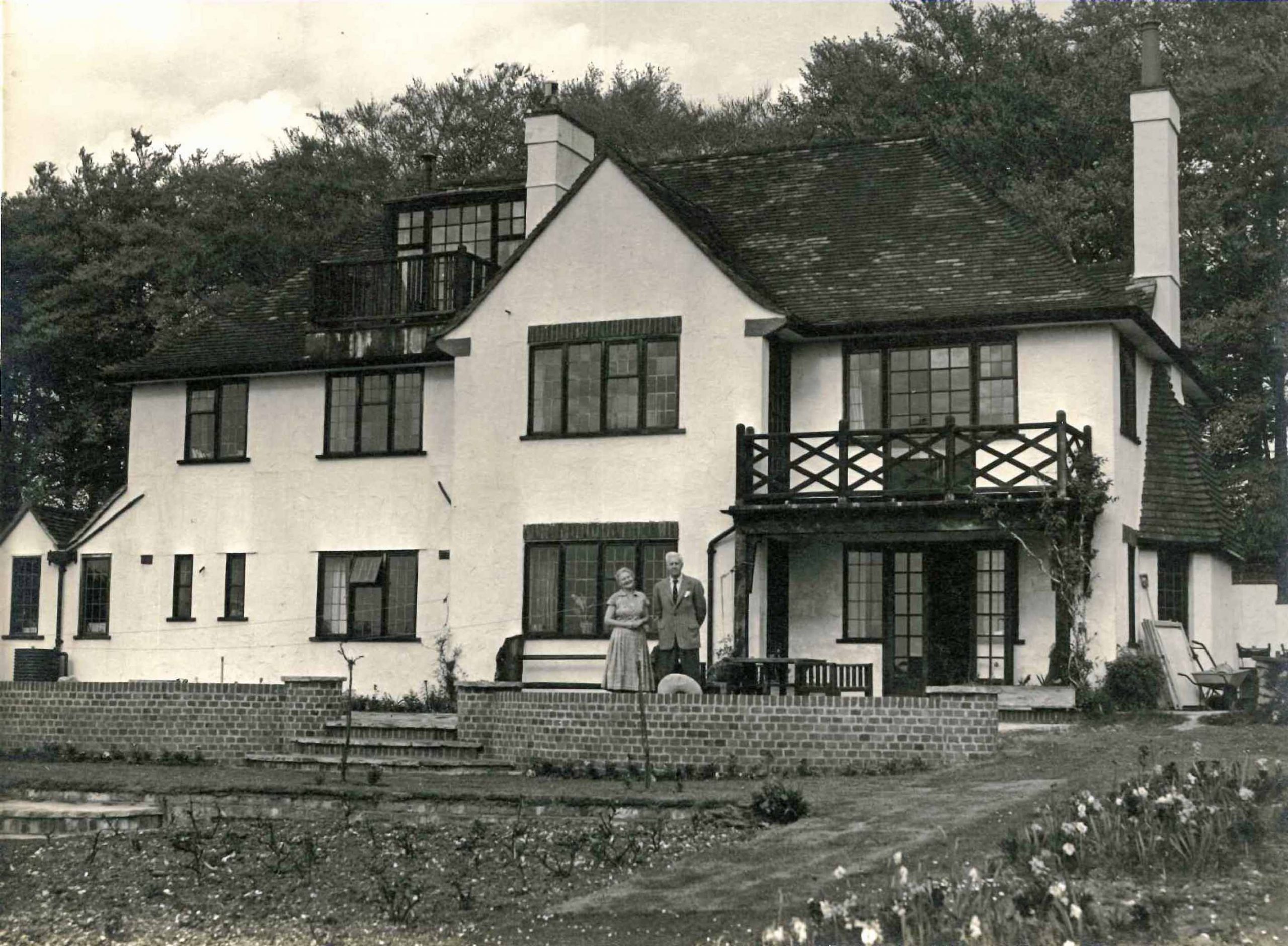
Barnes was Secretary and Vice Chairman of the Parochial Church Council until early in the Second World War and after the War was Chairman of the Parish Council for many years. He helped buy the 31½ acres of park and farm land which became the King George V Playing Fields for the village and was a founder member of the Effingham Housing Association. When the Effingham Residents Association was started in the 1960s he would attend every meeting, sitting in the front row and taking a great interest in every item.

Prior to World War II he worked on the design of the very successful Vickers Wellington and Warwick aircraft using the innovative geodetic frame he had invented.
At the outbreak of the War, Barnes, a peaceful man by nature, thought deeply about how he could help bring it to a swift conclusion and his mind turned to the invention of immensely powerful bombs to be carried by aircraft to take out strategic targets. But it was his bouncing bomb that was finally accepted as his first contribution. This was used in 1943 to destroy the important dams in the Ruhr and disrupt German industrial production in a mission called Operation Chastise. But it came at a high price of the huge loss of 53 crew of 617 Squadron who flew the mission and Barnes never really came to terms with this. In 1955 the mission was made into a very successful film called The Dam Busters based on a book by Paul Brickhill, which made Barnes a national figure. After Operation Chastise his ideas were more influential and he designed the massive earthquake bombs he had earlier envisaged which were used to great effect on German strategic targets.
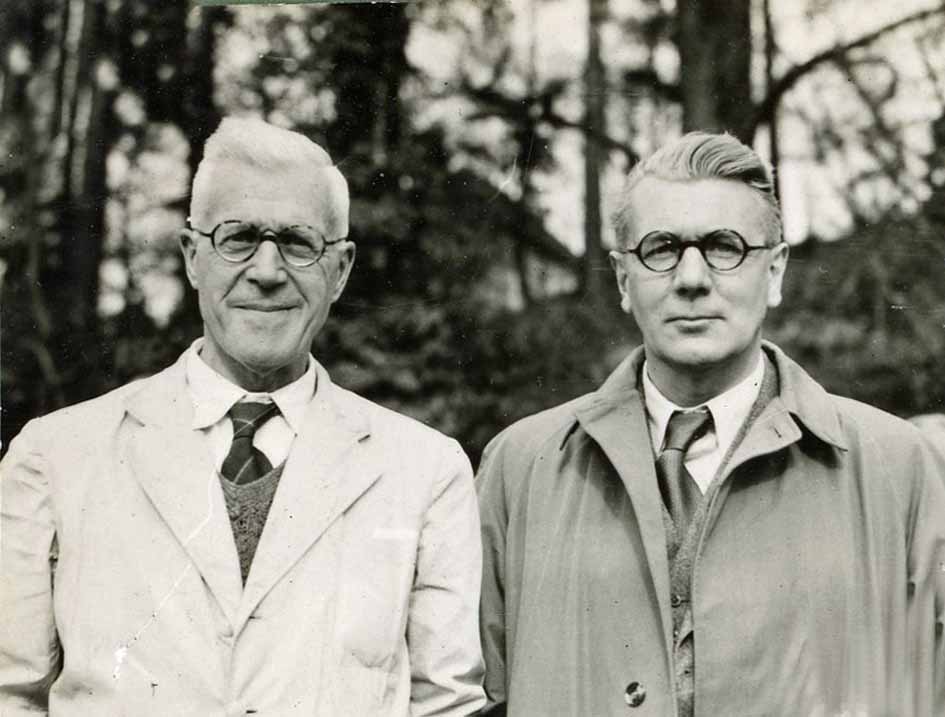
Post-War Career and Death
Barnes’ post-war career is less known but he carried on his innovative inventions into his seventies. He was fascinated by the idea of supersonic flight. He invented a swing wing aircraft, only for the Americans to copy the idea and develop their own swing wing aircraft. Britain no longer had the financial resources to develop such projects alone and many of his innovative ideas were not pursued. Some, like the Stratosphere Chamber were and it can still be seen at Brooklands Museum.
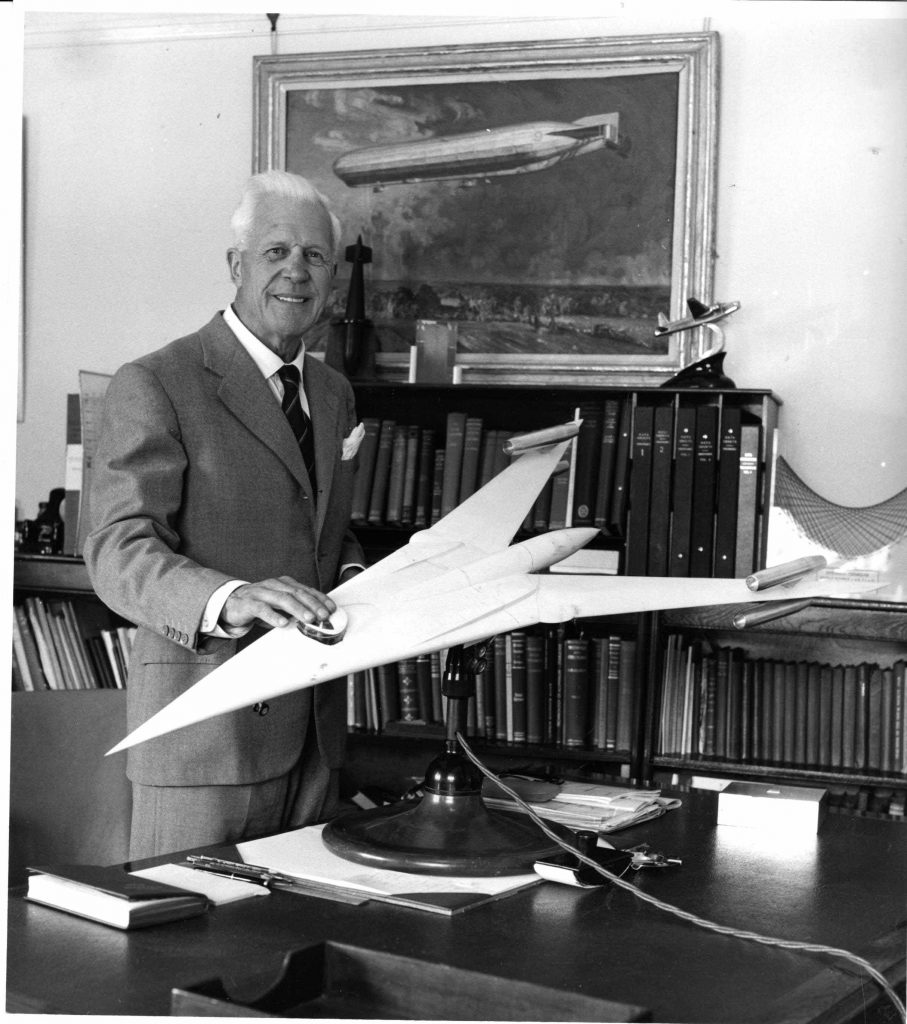
During this time his work was recognised and he received many awards and honours. The Fellowship of the Royal Society and CBE he received at the end of the War were finally followed by his long overdue knighthood in 1968.
He remained very much a family man and now that his children had their own children the Effingham home became a magnet for their large family.
He continued his community and charity work and became Chairman of Christ’s Hospital’s governing body, helping the school through a very difficult period.
Finally, in 1971 Vickers compulsorily retired Sir Barnes at the age of 84 as he was unlikely to have retired in any other way. He continued to develop his ideas at home until ill health finally overtook him. He died on 30 October 1979 and was buried in the churchyard of St Lawrence Church in his beloved village of Effingham, with memorial services being held at Effingham and at St Paul’s Cathedral. Molly, his wife died six years later and was buried in the same grave. 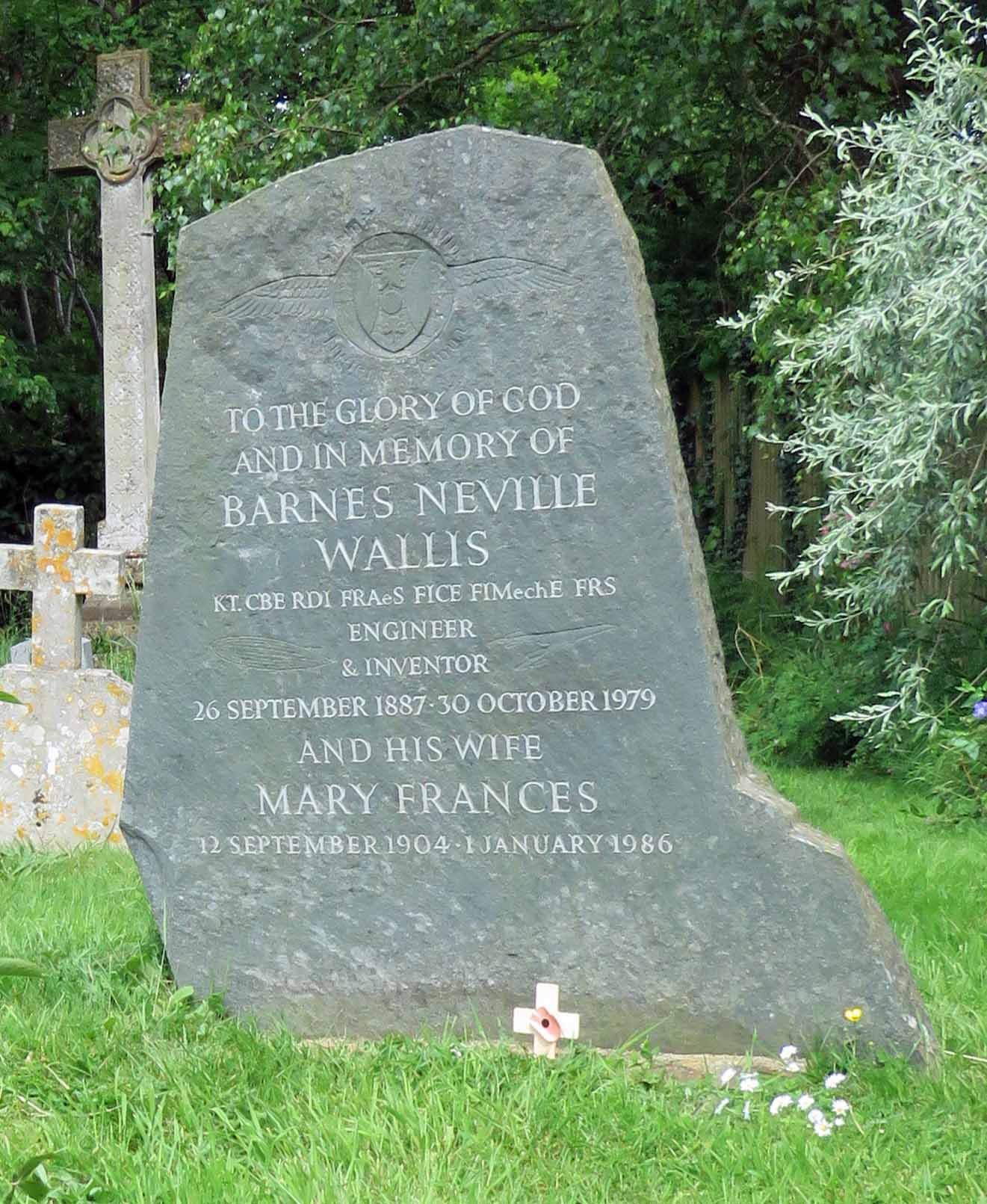
Photos are courtesy of members of Sir Barnes’ family, The Barnes Wallis Foundation, Brooklands Museum and EFFRA



